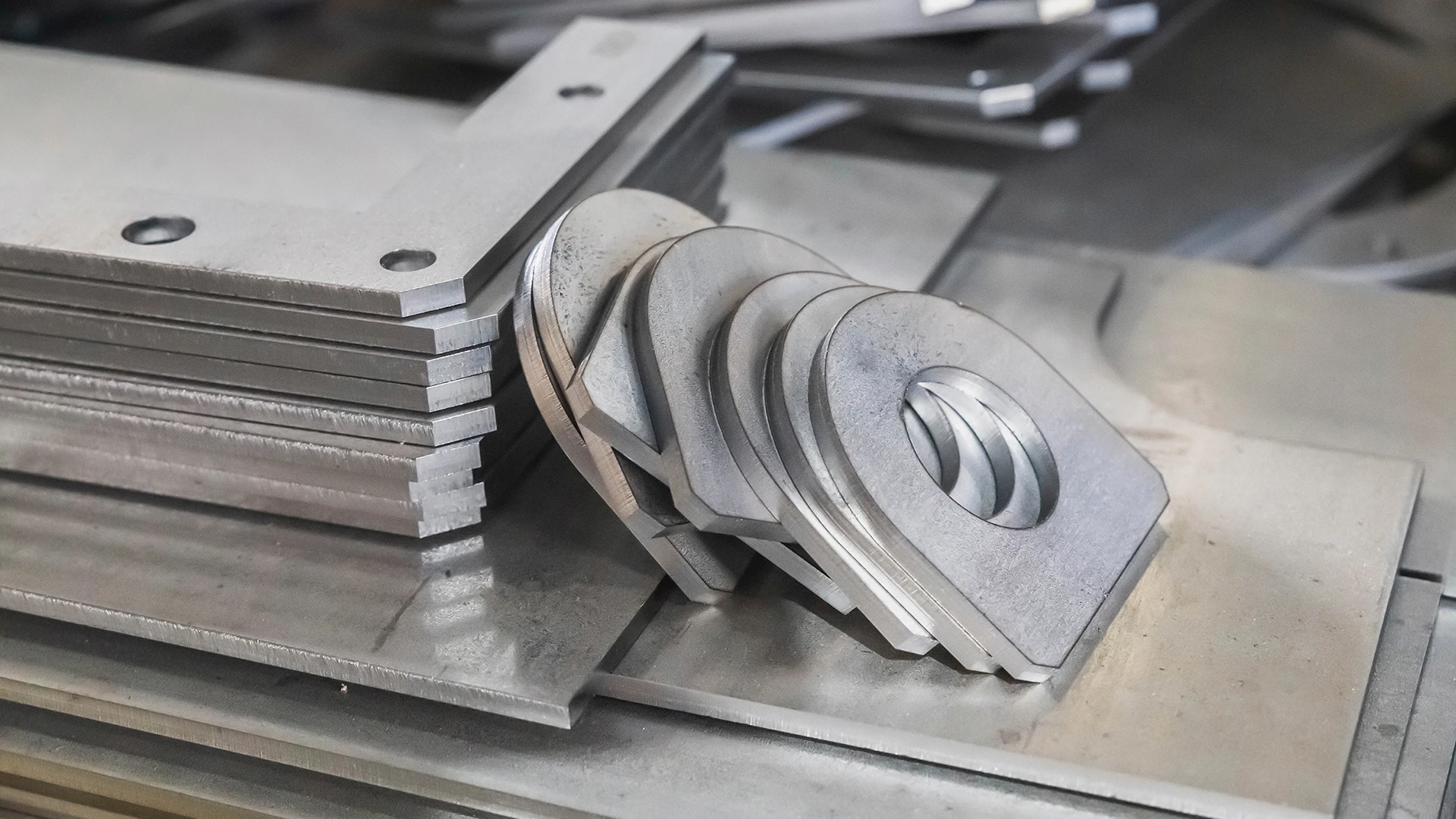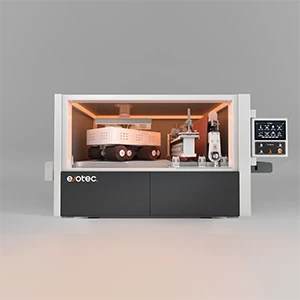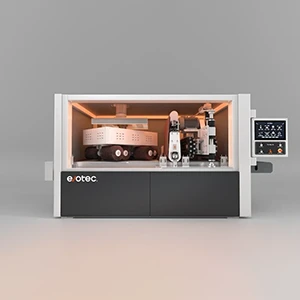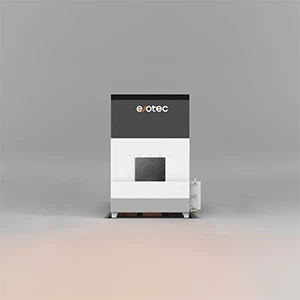Automatic Deburring Machines for Laser-Cut Parts: Why Edge Rounding Matters More Than You Think
Laser cutting is precise, fast, and incredibly flexible—but it doesn’t finish the job. Every laser-cut part still leaves the machine with sharp edges, micro-burrs, and often an oxide layer. Left untreated, those edges can cause injuries, poor fit-up, coating failures, and costly rework. That’s where automatic deburring machines for laser-cut parts come in. By combining deburring, edge rounding, oxide removal, and surface finishing in a controlled process, these systems transform “as-cut” parts into safe, assembly-ready components that meet modern quality standards—often in a single pass. Whether you’re running a laser job shop or an in-house fabrication line, understanding edge rounding and deburring is key to improving downstream operations, from bending and welding to powder coating and final assembly.

Key Takeaways
Why laser-cut parts still need deburring and edge rounding
Laser cutting is far cleaner than mechanical cutting or plasma, but it still introduces three familiar problems:
- Micro-burrs and sharp edges
Thermal cutting leaves microscopic burrs and knife-sharp corners along external profiles and internal cutouts. These edges can cut operators, snag during assembly, and damage mating parts. - Oxide layer and heat tint
Especially on carbon steel and some stainless applications, laser cutting can form an oxide film and heat-affected zone around the cut edge. This layer interferes with welding and paint or powder adhesion unless it’s removed. - Inconsistent edge geometry
Without controlled edge rounding, some parts ship with razor-sharp edges and others with lightly brushed corners—depending entirely on whoever ran the angle grinder that day. That inconsistency is a problem for OEMs with defined specifications for edge radius and coating performance.
Edge rounding—also called edge breaking or edge radiusing—is the controlled removal of those sharp corners to generate a repeatable radius all around the part, inside and out. Leading machine manufacturers show that controlled deburring and edge rounding can achieve up to about a 2 mm radius (R2) in a single pass, even on complex geometries.
For parts that will be painted or powder coated, this isn’t optional. Sharp edges cause the coating to thin out at the corner due to surface tension, making those points the first place for rust, peeling, or chipping. Rounded edges hold more paint and dramatically improve corrosion resistance.
What an automatic deburring machine does for laser-cut parts
A modern automatic deburring machine for laser-cut parts combines several finishing steps in one controlled workflow:
- Burr removal (deburring)
Wide abrasive belts or drums knock down dross and burrs from laser cutting, leaving a flat, clean edge. This is the first step toward form-true parts that sit flush on bending tools, welding fixtures, or assembly jigs. - Edge rounding (edge radiusing)
Rotary brushes, top brushes or multi-directional brush heads then work all around the part—outer contours and internal cutouts—to create a defined radius. Many systems can achieve a uniform edge radius up to about 2 mm in one pass, or even beyond that, depending on the brush media and process settings. - Laser oxide removal
For carbon steel, dedicated belt/brush combinations remove the dark oxide layer left by laser cutting, ensuring clean, bright edges that weld and coat reliably. - Surface finishing
Additional heads can apply a non-directional or line-grain finish, giving parts a consistent appearance and improving downstream cleaning and coating. - Single- or double-sided processing
Depending on the machine concept, parts can be deburred and edge-rounded on one side, or on both sides simultaneously, eliminating the flip-and-re-run step and reducing finishing time by up to 50–60%.
The result is a fully processed laser-cut part: burr-free, with consistent edge radius, clean edges, and a defined surface finish—ready for bending, welding, painting, or assembly.
Core benefits of automated edge rounding and deburring
1. Safer, more ergonomic handling
Sharp laser-cut edges are a major source of hand injuries and the need for heavy PPE. Rounded edges greatly reduce cut risk and make large panels easier to handle and stage.
2. Better coating adhesion and corrosion resistance
Rounded edges allow powder and liquid coatings to build to a more uniform film thickness, instead of thinning and pulling away at sharp corners. The payoff:
- Fewer paint touch-ups and rework
- Improved salt-spray performance and field durability
- Longer warranty life in corrosive environments
3. Higher dimensional and assembly quality
Removing burrs and oxide improves:
- Fit in tight-tolerance assemblies
- Seating in bending and forming tools
- Weld quality at the edge of the part
With consistent deburring parameters, you get repeatable, spec-driven edges instead of “depends who was on the grinder.”
4. Throughput and labor savings
Compared with manual deburring and hand-grinding:
- Parts can be finished in a single automated pass
- Operators can run more parts per shift with less fatigue
- Training focuses on process control, not “how to grind” each part type
Many shops report significantly reduced finishing time once they move from angle grinders to automatic deburring machines for their laser-cut parts.
5. Consistency for OEM and Tier-1 requirements
If your customers specify edge radius, Ra values, or coating performance, you need a process you can prove and repeat—across batches, shifts, and facilities. Automated deburring and edge rounding deliver that consistency and make it easier to document your finishing capability in audits or PPAP documentation.
Key technologies in automatic deburring machines for laser-cut parts
When you dig into the top machine builders, you see a common toolkit of technologies designed around quality and control:
- Abrasive belt / drum heads for primary deburring, oxide removal, and surface finishing
- Rotary brush modules to round both external and internal edges evenly, often in a cross-hatch pattern
- Vacuum or magnetic conveyors to hold small parts securely and maintain consistent contact pressure
- Double-sided processing concepts to deburr and edge-round both sides in one pass
- Wet or dry dust extraction systems, with wet collectors often preferred for aluminum or explosive dust mixtures
- Automated program recall and height adjustment so operators can quickly switch between different material types, thicknesses, and desired edge radii
These elements come together to create controlled, repeatable finishing recipes: select your material, thickness, and desired radius; call up the stored program; and run your laser-cut parts through with confidence.
How to choose an automatic deburring machine for laser-cut sheet metal
When you evaluate deburring and edge rounding solutions for laser parts, use these questions as a quick checklist:
- What materials and thicknesses do you run most often?
- Thin stainless and aluminum might push you toward gentler brush action or potentially wet grinding to avoid heat.
- Mixed material and thickness ranges may require more flexible abrasive heads and programmable pressure control.
- What edge radius do your customers or coatings require?
- General safety and handling: smaller radii (e.g., R0.2–R0.5).
- Demanding powder coating or corrosion specs: larger R (up to ~2 mm) on specific edges or all around.
- Do you need double-sided processing?
- If you’re flipping sheets today to run them twice, a double-sided deburring machine or an automated parts-returning-conveyor (U-Flow)could immediately cut that time in half.
- What part sizes are typical—and what’s the smallest?
- Check the minimum part size your conveyor and vacuum/magnetic system can hold reliably (for many systems, this starts around 50×50 mm).
- How critical is surface finish?
- Architectural or visible panels may justify a dedicated finishing head for line-grain or non-directional texture.
- What does dust management look like in your plant?
- Aluminum and mixed-metal dust may call for a wet extraction system to reduce explosion risk and keep the machine interior clean.
Clarifying these points makes it much easier to match a specific machine configuration—number and type of heads, working width, wet/dry, conveyor system—to your actual laser work.
FAQs
1. Why do laser-cut parts need deburring if the cut looks clean?
Even when a laser cut looks clean, it usually leaves microscopic burrs, sharp corners, and often an oxide layer on carbon steel. Those defects can cut operators, interfere with assembly, and cause coating failures. Deburring and edge rounding remove these issues and stabilize the part for downstream processes.
2. What edge radius should I target before powder coating?
It depends on your specification, but many coating suppliers recommend rounding to at least a small radius (e.g., R0.3–R0.5) on exposed edges, with more demanding corrosion or exterior applications calling for larger radii up to about 2 mm. A consistent radius helps coatings wrap the edge instead of thinning out and peeling.
3. What is the difference between deburring and edge rounding?
- Deburring removes burrs and dross to restore a flat, true edge.
- Edge rounding goes further, softening the corner and creating a defined radius around the perimeter and cutouts.
In practice, they are two stages of the same finishing process, often carried out in one pass using belt heads followed by rotary brushes.
4. Is a wet or dry deburring system better for laser-cut parts?
Both can work well. Dry systems are common and simpler to integrate. Wet systems use water to capture dust, which is particularly helpful for aluminum or mixed-metal dust where explosion risk must be managed. Your choice should reflect your material mix, regulatory requirements, and facility dust strategy.
5. Are automatic deburring machines worth it for smaller laser job shops?
For many shops, yes. Even modest volumes of laser-cut parts can justify automation when you factor in:
- Reduced manual grinding and labor time
- Fewer injuries and safety incidents
- More consistent edge quality and coating performance
- Better ability to meet OEM specs and grow into higher-value work
A smaller working width machine or a modular configuration can be a good entry point that still delivers a strong ROI.
If you’re relying on grinders and hand tools to finish your laser-cut parts, you’re leaving quality, safety, and margin on the table.
If you’d like to explore what an automatic deburring and edge rounding solution for laser-cut parts could look like in your plant—machine configuration, edge radius targets, or how it ties into coating and welding—share a few details about your current process and part mix.
We can walk through options together and map a practical path from “as-cut” to consistently finished, spec-ready parts.








